Replacing a Ceramic Stove Top: A Complete Guide
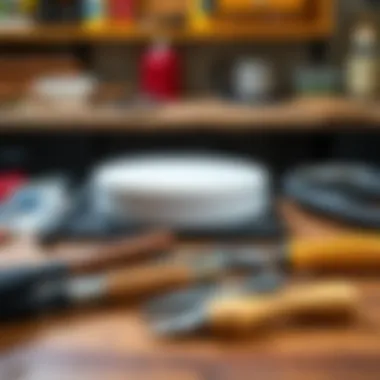
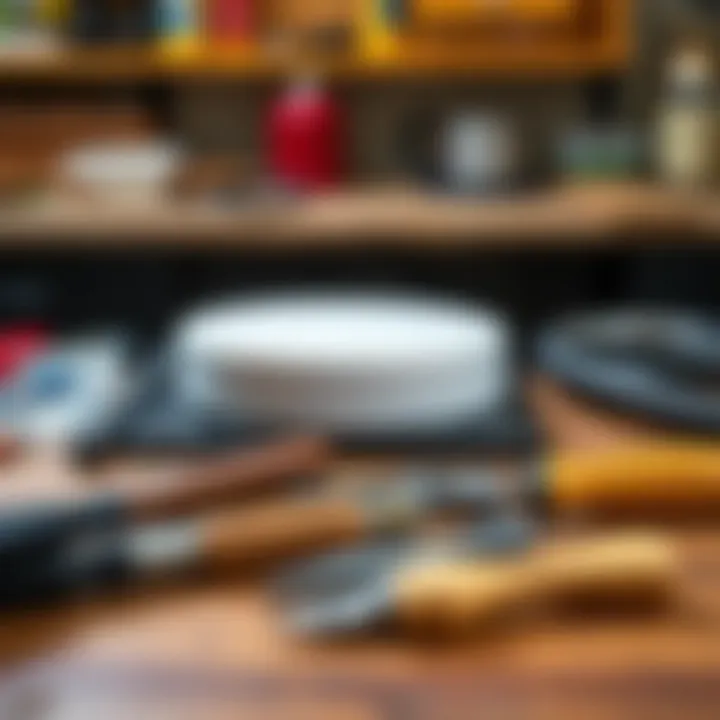
Intro
Understanding the intricacies of home improvement can make the difference between a simple task and a full-blown project. One such task that many homeowners may face is replacing a worn-out ceramic stove top. A ceramic stove top can be both stylish and functional but, over time, wear and tear can diminish its appeal and performance. Whether it be an accidental crack or a stubborn stain that refuses to budge, there are various reasons one might consider a replacement.
For those who are avid DIYers or for those who employ professionals for such jobs, knowing the essentials can save both time and money. This guide intends to provide comprehensive insights, examining everything from the motivations behind a replacement, to the variety of ceramic stove tops available, and then delving into a detailed step-by-step process for removal and installation.
We'll also touch on necessary safety measures, the tools required, common challenges that might arise, and maintenance tips for ensuring the new stove top remains a centerpiece of your kitchen for years to come.
By approaching this task with the right information, confidence will flourish, and the outcome will surely meet one's expectations.
Design Trends
In an ever-evolving world of interior design, the choice of a ceramic stove top is no longer merely a functional decision; it’s an expression of style and personal taste. Consumers today are more inclined towards contemporary aesthetics that harmonize with the overall design of their kitchens.
Contemporary Styles
Ceramic stove tops come in a variety of designs. Sleek and smooth surfaces in minimalist forms can easily complement modern cabinets and countertops. Many homeowners are migrating towards induction cooktops, which often boast a ceramic coating providing not only a shiny finish but also improved heat distribution. With patterns and finishes being part of the equation, one can find ceramic stove tops with glass-like appearances or bespoke color options that cater to unique styles.
Color Palettes and Materials
The spectrum of colors available for ceramic stove tops has broadened significantly. Rather than being limited to traditional whites and blacks, colors now span deep ocean blues, vibrant greens, and muted earth tones. These hues can often punctuate a kitchen's design or act as a neutral backdrop for more vibrant decor.
Moreover, the materials paired with the stove tops, such as stainless steel or wood, can create an interactive space that feels well thought out. Mixing materials becomes a habit quite effortlessly, presenting a beautiful synergy that leaves a lasting impression.
"Choosing the right stove top can elevate not just cooking, but also the way your kitchen interacts with your daily life."
In terms of functionality, it’s not just about how the stove top looks but also how it fits with the workflow of the kitchen. An ergonomic layout, along with practical choices, makes all the difference. Let's look at some functional solutions next.
Understanding Ceramic Stove Tops
Ceramic stove tops have gained popularity over the years, primarily due to their aesthetic appeal and practical functionality. Understanding what they are and how they function is critical for anyone considering a replacement, whether for their own kitchen or advising clients in a design setting. Knowledge of ceramic stove tops helps in making informed decisions regarding installation, maintenance, and potential issues that may arise.
What is a Ceramic Stove Top?
Ceramic stove tops are cooking surfaces made from a ceramic material that withstands high temperatures. They can either be standalone units or part of a composite model that combines craftsmanship with modern technology. Commonly, these stove tops feature smooth, flat surfaces that offer a sleek appearance, making them easy to integrate into various kitchen designs. Most models use electrical coils beneath the ceramic surface to produce heat, allowing for efficient cooking.
Benefits of Ceramic Stove Tops
Durability
The durability of ceramic stove tops is one of their most attractive features. They are designed to resist scratches, stains, and heat damage, making them suitable for daily use. This quality translates to long-lasting performance, reducing the need for frequent replacements. Additionally, when properly cared for, these stove tops can maintain their sleek appearance for years, a considerable advantage in high-traffic kitchens.
Easy cleanup
Easy cleanup is another hallmark of ceramic stove tops. Their smooth surface allows for quick wiping and cleaning with just a cloth and mild detergent. Unlike traditional coil stove tops, where food debris often gets trapped in crevices, ceramic surfaces can be cleaned efficiently, making it a practical choice for busy lifestyles. However, bear in mind that while easy to clean, they still require regular maintenance to avoid any buildup of burnt-on food or stains.
Consistent cooking
The ability to provide consistent cooking is crucial for any chef or home cook. Ceramic stove tops heat evenly, distributing the heat across the entire surface area. This means that pots and pans will cook food uniformly without the hot spots often seen in gas burners. This consistency can greatly enhance a cooking experience, particularly for intricate dishes that require precise temperatures.
Common Issues with Ceramic Stove Tops
While ceramic stove tops present many advantages, they are not without their challenges.
Cracks and scratches
One of the most common issues encountered are cracks and scratches. Even though ceramic is durable, it can be fragile under certain conditions, such as dropping heavy pots or pans. These damages not only affect the aesthetic quality but can also lead to further complications like heating inconsistencies. Being aware of how to handle cookware carefully can help mitigate this problem.
Heating inconsistencies
Heating inconsistencies can also arise, particularly with older models. If the heating elements start to fail or work erratically, it can lead to unpredictable cooking outcomes. It's not just about the stove - it can put a wrench in your daily cooking plans. Regular maintenance and prompt repairs are essential to prevent long-term issues.
Failure of heating elements
The failure of heating elements is yet another hurdle faced with ceramic stove tops. When a heating element becomes damaged or worn out, it can result in cold spots or complete cooking failures. Knowing how to assess and replace these heating elements is essential for maintaining the appliance’s efficiency and performance.
Understanding ceramic stove tops, their benefits, and the issues associated with them sets the stage for successful replacement and maintenance. Whether you're a homeowner contemplating an upgrade or a professional in need of specialized knowledge, this segment provides a solid foundation. This knowledge is invaluable not just for making purchases but also for ensuring long-term satisfaction and performance.
When to Replace Your Ceramic Stove Top
Understanding when it’s the right moment to replace a ceramic stove top is crucial. This decision impacts not just the functionality of your cooking space but also the safety and aesthetic aspect of your kitchen. It's about recognizing telltale signs that point toward replacement instead of mere repair. Ignoring the signals can lead to bigger headaches down the line, or worse, hazardous conditions.
Signs of Damage
Identifying damage is the first step in deciding whether to replace the stove top. Let’s delve into the most common indicators.
Visible cracks
When you spot visible cracks on your stove top, it’s a clear indicator that trouble is brewing beneath the surface. These aren't just aesthetic issues; cracks can compromise the integrity of the unit. Aside from looking unsightly, they might lead to heat distribution problems, meaning that cooking could become inefficient. A cracked ceramic surface can also harbor grease and grime, which, overall, makes cleaning a headache. If left untreated, cracks may widen, ultimately leading to complete failure of the stove top, which is a costly outcome.
Discoloration
Discoloration on your ceramic stove isn’t just an eyesore; it often signals overheating or chemical damage. This change in color can also stem from burnt-on food or other substances that have been cooked on the surface, making it crucial to pay attention. While some stains are cleanable, persistent discoloration indicates that your stove top has endured more than it can handle. It may not directly affect performance, but it certainly detracts from your kitchen's appeal and could hint at underlying material degradation.
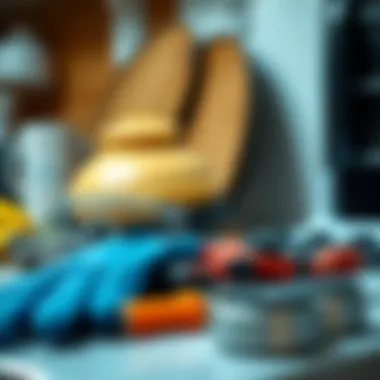
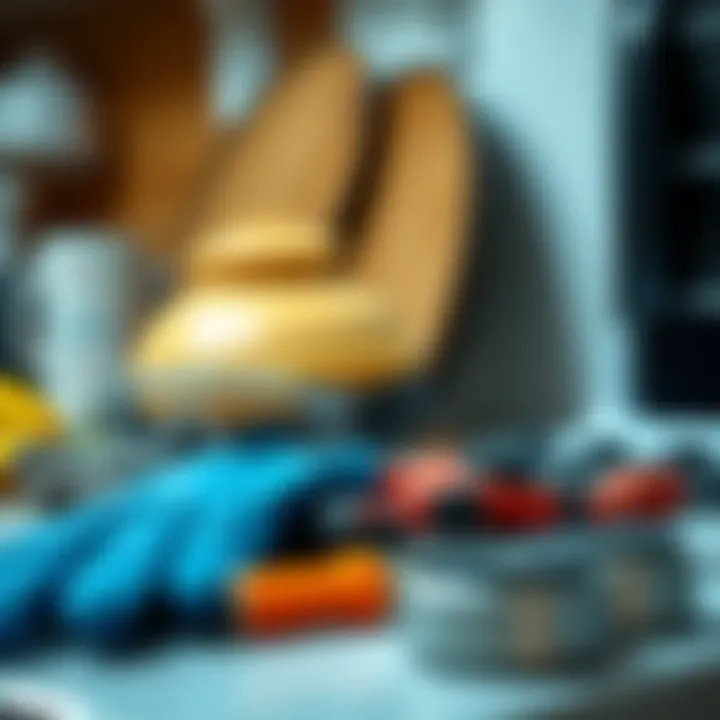
Unresponsive touch controls
Experience frustration with unresponsive touch controls? If your ceramic stove top’s touch buttons are acting up, it can disrupt your cooking routine. Whether it’s a failure to respond to your fingers or just delayed reactions, this can be annoying. More importantly, it raises safety concerns. If you can't reliably turn the burner on or off, you could create a potentially dangerous situation. While it might be possible to repair touch controls, persistent issues could suggest the need for a full replacement.
Assessing Repair vs. Replacement
Once you've identified signs of damage, it’s time to weigh your options: repair or replacement? This decision hinges mostly on cost and longevity of the unit.
Cost of repairs versus new unit
Evaluating the cost of repairs versus a new unit is less straightforward than it sounds. Repairs might seem like a no-brainer, especially if you're operating on a tight budget. However, broken elements, labor costs, and the ever-present possibility of something else failing soon after repairs can quickly tip the scales in favor of a new stove top. New units often come with warranties, offering peace of mind if something goes awry. A new stove can also present energy efficiency options that older models lack.
Long-term usability
Considering the long-term usability is vital when deciding between repairing or replacing the stove top. If you’re repairing a model that has been around for years, factor in how likely it is that further issues will arise. Older units tend to have limited usability, suggesting that replacement could be the more intelligent move in the long run. Newer models often come with advancements that can enhance cooking performance and even save on energy costs. Think of it like this: investing in a new stove top today may set you up for years of hassle-free cooking tomorrow.
In summary, fibbing on the state of your ceramic stove top can lead to larger issues, both financially and for your culinary safety. Recognizing damage signals and weighing your repair options are crucial steps to ensuring that your cooking space remains functional and inviting.
Types of Ceramic Stove Tops
Understanding the different types of ceramic stove tops is crucial for anyone considering a replacement. Each type offers its own set of features, pros, and cons. This knowledge not only aids in making an informed choice but also sets the stage for a successful installation and user experience. Knowing what works best for your cooking habits can save time, energy, and prevent future headaches.
Smooth vs. Textured Surfaces
When it comes to ceramic stove tops, the choice between smooth and textured surfaces can significantly affect both function and aesthetics. Smooth surfaces are typically easier to clean, making spills and splatters a breeze to wipe away. Their sleek look can blend well in modern kitchens. On the flip side, textured surfaces may provide better grip for cookware, minimizing the risk of slipping during intense cooking sessions. However, they can be a bit more challenging to keep spotless, as residues might settle in the crevices. Ultimately, the decision might boil down to personal preference and cleaning habits.
Induction vs. Radiant Heating
The distinction between induction and radiant heating systems is a pivotal element to consider when replacing a ceramic stove top. Each heating method has its own characteristics that can markedly influence energy consumption and cooking efficiency.
Energy efficiency
Induction heating is renowned for its energy efficiency. This system directly heats the cookware, which means less energy wasted on heating the stove surface itself. According to various studies, induction tops can be up to 90% more efficient compared to traditional coil or radiant types. This feature not only reduces energy bills but also shortens cooking times.
One major advantage of this efficiency is its effect on kitchen comfort; induction generates less ambient heat, making cooking less sweltering during hot months. However, the upfront cost tends to be higher, and it requires compatible cookware, which can be a consideration for some homeowners.
Cooking performance
When contemplating cooking performance, induction heat creates a rapid response to temperature adjustments. For those who enjoy precision in their culinary endeavors, this responsiveness is a significant selling point. Unlike radiant heating, which may take longer to settle at the desired temperature, induction systems enable chefs to quickly change heat levels, making them ideal for complex recipes—a truly invaluable feature for the culinary enthusiast.
However, with great power comes some downsides. Induction units can be sensitive with respect to the type of cookware used; not every pot or pan will work. Moreover, some cooks might find the inaudible nature of induction less satisfying than the familiar clicks and hums of radiant options. Understanding these aspects can guide buyers in selecting a stove top that aligns with their cooking style and preferences.
In summary, discerning the varieties in ceramic stove tops helps in tailoring the purchase to one's specific needs. Each option has unique traits, making them suitable for different cooking habits and kitchen environments.
"Choosing the right ceramic stove top is like picking the right tool for a craftsman; the right choice enhances performance and makes the job a whole lot easier."
Necessary Tools and Materials
Replacing a ceramic stove top may seem straightforward at first glance, but it involves a set of specific tools and materials that are crucial for a successful installation. The right tools not only simplify the process but also ensure that the work is carried out safely and effectively. A little preparation can go a long way in making the task seamless, and being well-equipped allows one to tackle each step with confidence.
Essential Tools
Screwdrivers
When it comes to installing or replacing a ceramic stove top, screwdrivers are undoubtedly a fundamental tool. They come in various shapes and sizes, but for this task, having a Phillips head and flathead screwdriver on hand will cover most of your needs. The key characteristic is the interchangeable heads, allowing flexibility to remove different screws.
One unique feature to consider is the handle comfort. Ergonomic screwdrivers tend to provide better grip, reducing strain during extended use. However, fluctuating sizes can often hinder progress if not chosen wisely, especially in cramped spaces. Thus, a full kit often proves to be beneficial for ease of use when approaching different angles and tensions while securing or unsecuring the stove components.
Putty knife
The putty knife, often overlooked, plays an indispensable role in the removal process. It excels when it comes to prying and scraping, particularly when old sealants or residue cling stubbornly to surfaces beneath the stove top. The blade's flexibility allows it to conform to different surfaces, providing a smooth finish.
A standout feature of this tool is its versatility. It can also double as a tool for applying new sealant along seams, adding value to its use. However, if a wrong move is made, it can cause scratches on the surrounding area, thus precision is a must. In this article, its multifaceted value is precisely what makes it an essential part of your toolkit.
Measuring tape
For any installation, getting the dimensions right is paramount. Here, a measuring tape shines, facilitating exact measurements that are vital for ensuring the new ceramic stove top fits snugly into its designated space. Most notably, it provides the ability to measure both depth and width effortlessly with clear markings.
One we wouldn't overlook is a tape that includes both customary and metric measurements to cater to varied standards. However, one drawback might be its tendency to retract quickly, which can lead to inaccuracies if not handled with care. Keeping this in mind can help avoid errors that might accompany a seemingly simple task, making it a mandatory part of your preparation.
Materials for Replacement
New ceramic stove top
A critical aspect of the replacement is obviously the new ceramic stove top itself, which is often the main investment in the process. Choosing the right one involves considering size, type, and the features that suit your cooking style. The key factor here is the longevity and performance of the product, especially given the rigorous environment it must withstand.
The durable surface of a new ceramic stove top allows for high temperatures and offers a certain resistance to scratches. However, you should be cautious since some cheaper variants might compromise safety and efficiency. Thus, investing in a quality brand often proves to be a wise choice, ensuring that you won't be returning to the store anytime soon.
Sealant
An often underappreciated yet crucial material, sealant helps create a watertight bond between the stove top and the countertop. The right sealant provides protection against spills and leaks, preventing moisture from infiltrating beneath the stove surface. Ideally, the flexibility of the sealant is something to watch for, as this allows for slight movements without breaking the bond.
However, a sealant with a long curing time can delay your installation process significantly. Therefore, choosing a fast-curing variant may benefit those looking to wrap things up promptly without compromising the quality of the installation.
Electrical connectors

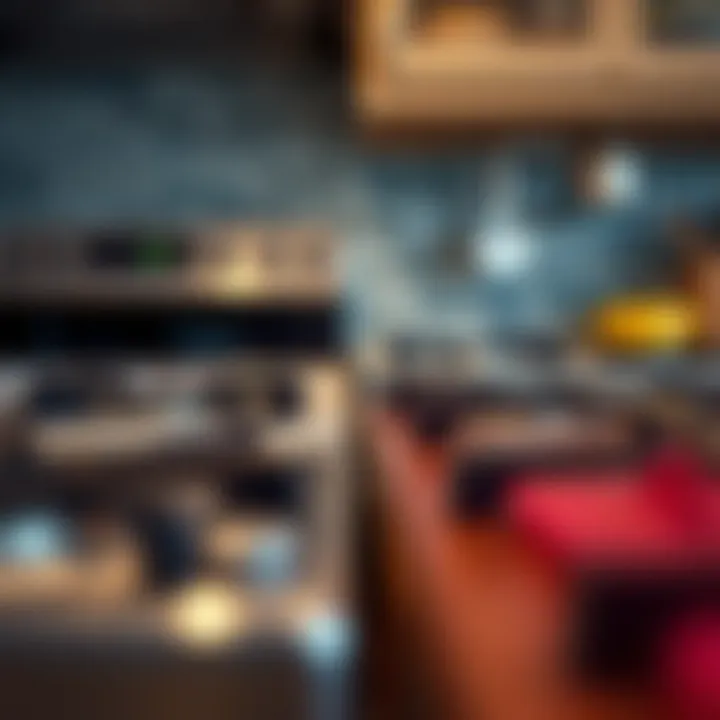
Electrical connectors play a pivotal role in ensuring the new stove top operates properly. These small yet mighty components facilitate the connection between your stove top and the power supply. The quality of the connectors directly impacts safety and functionality, as poor connections could lead to failures or even hazards. The key characteristic you should look for is a robust insulating material that can withstand heat and avoid short-circuiting.
A unique aspect of connectors is that they often come in various types designed for specific purposes or appliances. But be mindful; using the wrong type can lead to performance issues or dangerous situations. Thus, sourcing the correct electrical connectors shouldn't be overlooked in your preparation phase.
In summary, taking the time to assemble the right tools and materials before starting the replacement of a ceramic stove top can significantly enhance both the ease and quality of the project. Proper planning can save potential headaches down the road and ensure your new stove functions optimally.
For further insights and detailed information, consider checking resources like Wikipedia and Britannica. These platforms provide comprehensive analyses that can aid in understanding various considerations before proceeding with your stove top replacement.
Preparation for Replacement
Preparing for the replacement of a ceramic stove top is not just a matter of choosing a decent day for some DIY work; it demands a considered approach. Taking time to prepare ensures that everything flows smoothly, mitigating potential issues down the line. Think of it like setting the stage before a play—every detail matters to ensure a successful performance.
When embarking on this endeavor, establishing a safe environment while gathering the right tools can save time and frustration. It’s crucial not to overlook the significance of safety measures, as rushing through this phase may lead to dangerous mishaps or inadequate installations.
Safety Precautions
Disconnecting power supply
Before diving into the installation process, the first step is turning off the power supply to the stove. This act might seem straightforward, but it’s absolutely essential. By disconnecting the power, you eliminate the risk of electrical accidents, avoiding not only injury but also costly damage to new components you will install.
A key characteristic of this action is its preventive nature—it's a popular choice in both professional and DIY installations. The uniqueness lies in how a simple step acts as a shield against unexpected encounters with live wires. Power off might feel trivial, but it’s the kind of step that safeguards both you and the new ceramic stove top.
Advantages:
- Safety First: Protects the individual throughout the replacement process.
- Reduced Risk of Damage: Lowers hazards that might damage the new unit.
Disadvantages:
- Disruption of Power: May inconvenience household activities if the power is off for an extended period.
Using protective gear
Another vital aspect is ensuring the use of appropriate protective gear. This step underscores the commitment to personal safety while handling tools and potentially sharp components of the stove. Wearing gloves, goggles, and sturdy footwear is a hallmark of best practices in any repair or replacement process.
The emphasis on protective gear highlights the practical side of home improvement and emphasizes being smart about risk. The uniqueness here is that this simple investment in safety can greatly decrease the likelihood of accidental cuts or burns, making it a wise choice for anyone looking to replace a ceramic stove top.
Advantages:
- Injury Prevention: Protects against cuts, burns, and other potential injuries.
- Confidence to Act: Wearing gear promotes a sense of security.
Disadvantages:
- Additional Cost: Can add to the initial expense if specific gear is needed.
Removing the Old Stove Top
Once you’ve ensured a safe environment, it’s time to tackle the removal of the old ceramic stove top. Proper techniques here can facilitate a hassle-free installation of the new one. Careful execution during this phase ultimately determines how well the new unit will fit.
Unbolting the unit
To remove the old stove top, you will begin by unbolting it from its base. This task requires careful attention, as each bolt must be removed systematically to avoid hurting the unit or yourself. This process is a cornerstone of removal, as it allows you to unfasten the top securely, paving the way for an effective replacement.
A key characteristic of unbolting from both a procedural standpoint and a practical one is its ability to allow for easy access to the components beneath. Unique in its requirement for both strength and precision, this step can be simplified with the right tools. Missing any bolts can cause damage, making it a crucial aspect to get right.
Advantages:
- Avoids Damage: Allows for a careful and intact removal of old units.
- Foundation for New Install: Necessary for any forthcoming installation process.
Disadvantages:
- Time-Consuming: Removing bolts can take longer than you might anticipate.
- Risk of Stripping: Improper technique can lead to stripping bolts.
Carefully lifting off the top
With the bolts out of the way, the next step is carefully lifting off the old stove top. This phase may seem easy; however, it’s where many mistakes can happen. One must be deliberate in their approach to avoid unnecessary damage to the surrounding cabinetry or plumbing beneath.
The careful lifting action emphasizes the need for precision—it's not just about getting the top off but doing it in a way that preserves the integrity of the installation site. The uniqueness of this step lies in its blend of technique and caution, making it a critical move that significantly contributes to the overall replacement project.
Advantages:
- Preserves Area: A careful lift protects the surfaces around the stove from damage.
- Easy Replacement Path: A smooth removal can lead to easier installation later on.
Disadvantages:
- Heavy Lifting: May require two people to manage, especially if the unit is large.
- Potential Frustration: If not executed well, can lead to more work.
Remember, meticulous preparation can turn an intimidating task into a straightforward one. Make safety and precision your top priorities!
Installing the New Ceramic Stove Top
Installing a new ceramic stove top is where the rubber meets the road. It’s the phase where all the planning and preparation translate into tangible results. This step is crucial, as a poorly installed stove can lead to various issues, including hazards during operation. A well-executed installation not only enhances the aesthetics of the kitchen but also ensures functionality, giving users a consistent cooking experience.
Preparing the Surface

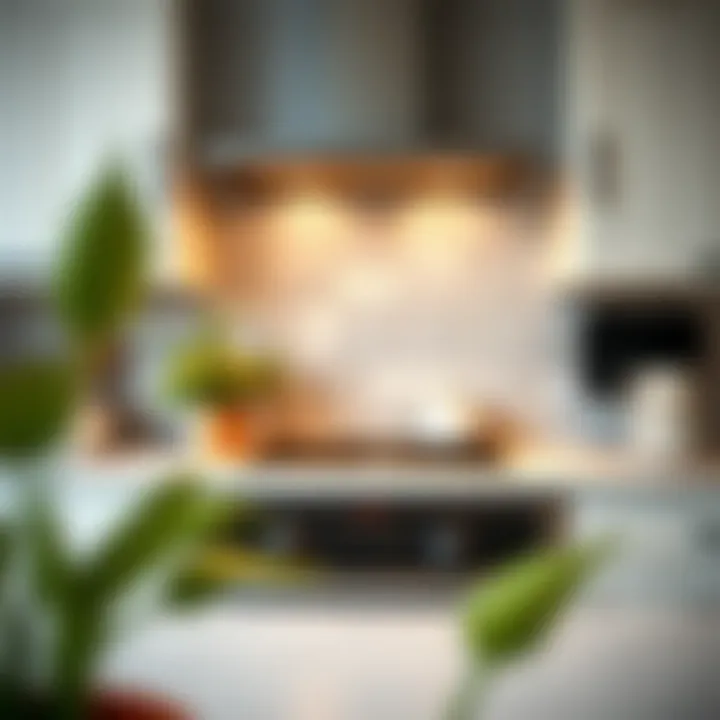
Before diving into the actual installation, it’s vital to prep the surface effectively. A clean, flat surface is your best friend here. First off, make sure the area where the new ceramic stove top will sit is free from debris, dust, and grease. Any leftover residue can interfere with how the unit sits and can lead to uneven heating or even damage over time.
Checking for any gaps or misalignments on the countertop is equally important. If the surface isn’t level, you may end up with a stove that wobbles, leading to cooking issues or worse. To get a precise level, using a spirit level across the countertop can be a real game-changer. If adjustments are necessary, shims can help create that perfect fit.
"An ounce of prevention is worth a pound of cure," so take the time to prepare well!
Additional Steps to Prepare the Surface
- Ensure the countertop is dry to discourage slippage.
- Inspect the electrical area for any wear or damage. Electrical issues can spell disaster down the line.
Securing the New Unit
Once you have the surface prepped, it’s time to secure the new unit. This part of the process involves a couple of critical aspects that can make or break your installation. Proper alignment and securing of the stove top ensures that everything operates smoothly.
Aligning and Securing
The process of aligning and securing your new ceramic stove top is what keeps everything in place. If you rush this step, your stove might not sit evenly, which can lead to various issues such as uneven cooking or discomfort during use. First, it’s important to align the stove correctly so that it fits snugly into the designated space. Then, the unit should be bolted down correctly to avoid any potential wobbling while cooking.
A key characteristic of this step is the importance of following the manufacturer’s instructions. They typically provide specific guidelines on alignment and securing mechanisms. The unique feature of this process is that you can often use standard tools like screwdrivers and leveling feet to enhance the fit. While it may seem simple, getting this alignment just right is crucial for the stove's longevity and efficiency.
- Advantage: A secure alignment improves the lifespan of your appliance.
- Disadvantage: Rushing might lead to mistakes, necessitating rework.
Connecting Wiring
Tackling the wiring is the final piece in the puzzle of installing a new ceramic stove top. This action is critical for ensuring your appliance operates safely and effectively. Connecting the wiring involves linking the stove to your home’s electrical system, which, if mishandled, could create serious safety hazards.
You will want to ensure that you are connecting the wires according to relevant color codes, usually black to black, white to white, and green or copper for grounding. This practice is a beneficial choice not only because it ensures safe operation, but also it typically follows local electrical codes, which is a must for inspections.
The unique feature of wiring connections is the importance of secure junctions. It’s advisable to use wire nuts to provide a stable connection, which can resist vibrations from cooking activities.
- Advantage: Proper connections mitigate risks of electrical fires.
- Disadvantage: Incorrect connections can lead to malfunction, making you redo the work.
Following these steps not only guarantees that your new ceramic stove top operates smoothly, but also assures a safe cooking environment, keeping both culinary creativity and family safety in mind.
Post-Installation Considerations
After you've put in all that work replacing your ceramic stove top, it’s not quite time to rest on your laurels. Post-installation considerations are crucial to ensure your new appliance operates as expected and remains in good shape for years to come. These steps not only confirm the installation was successful but also lay the groundwork for the stove top’s long-term functionality and visual appeal.
Testing the New Stove Top
Initial power check
The first thing you need to do after installation is check the power connection. This is more than just flipping a switch; it's making sure that everything is wired properly and the stove receives power as intended. A proper initial power check involves ensuring your circuit breaker isn't tripped and that all electrical connections are secure. This step contributes significantly to the overall safety and functionality of the stove top.
One key characteristic during this check is that it reveals immediate issues, ensuring that if something doesn’t seem right, you can address it before you start cooking. It’s essential to verify that the power supply is not overloaded and that components are in working order, making this a beneficial practice for any DIY undertaking. The unique feature of an initial power check is the simplicity; with minimal tools, you can confirm power before proceeding to functional tests, thus preventing more complicated problems down the line.
Functional testing
Once you’ve ensured everything is powered up, it’s time to delve into functional testing. This involves turning on each burner, monitoring heating response, and confirming temperature settings. Functional testing assures that all components operate as expected. It verifies the heating elements are working uniformly, which is crucial to your cooking experience.
A significant aspect of functional testing is that it can highlight inconsistencies. For instance, if one burner heats slower than another, it might need attention sooner rather than later. This testing is a valuable opportunity to gauge the cooking performance of the stove, confirming that it meets your culinary needs. A notable advantage is that early detection of defects can save you both time and money in the long run. However, if the testing reveals issues, further investigation into the wiring or underlying connections may be necessary, which could be more involved than originally anticipated.
Maintaining Your Ceramic Stove Top
Cleaning techniques
Keeping your ceramic stove top clean is vital, not just for hygiene but to maintain its aesthetic and functional quality. Effective cleaning techniques can significantly prolong the life of the stove top. You should use tools specified for ceramic surfaces, as harsher materials can lead to scratches and damages.
One strong advantage of good cleaning techniques is that they help prevent the buildup of grime or burnt food, which can alter heating efficiency. A unique approach is to use a mixture of water and vinegar, as it safely breaks down food residue without damaging the surface. When done regularly, this method ensures your cooking surface stays spotless and ready for action, making it an appealing option. However, be cautious not to let any cleaning solution sit too long, as that could cause discoloration.
Avoiding damage
Preventive measures are key in maintaining your ceramic stove top. Various practices can help avoid potential damage, such as using pots and pans with flat, smooth bases. This not only enhances heat distribution but also minimizes scratches on the stove surface.
The characteristic feature of avoiding damage is its focus on proactive care rather than reactive solutions. This approach is beneficial, as addressing wear and tear before it becomes an issue leads to a longer-lasting appliance. A unique aspect is training yourself to use protective mats or trivets under pots during cooking, thus creating a barrier against direct contact with the stove surface. Yet, keep in mind that neglecting these preventive measures might result in costly repairs or, in the worst case, a complete replacement sooner than expected.
"A stitch in time saves nine."
Closure and Final Thoughts
Replacing a ceramic stove top is not just a simple home repair but an investment in the functionality and aesthetic appeal of your kitchen. Throughout this guide, we have explored numerous aspects, from understanding what ceramic stove tops are to identifying the crucial tools for replacement. Each of these facets plays a vital role in successfully executing this project, ensuring that homeowners can enjoy a reliable and efficient cooking surface.
A key aspect to remember is that doing it yourself can save a bunch of dollars, but it’s not without its challenges. Weighing the pros and cons of self-installation versus calling a professional can often make or break your experience. Repairing or replacing your stove top can significantly enhance your kitchen, and taking the right steps ensures safety and durability.
As you revisit the journey of replacing your ceramic stove top, consider the knowledge and skills you've acquired. This guide serves not only as a tutorial but also as a comprehensive reference. Knowledge is power, especially when it comes to your home, and arming yourself with the right timing, techniques, and tools is essential.
"Preparation is the key to success."
Understanding this concept is crucial. Whether you choose to execute the task yourself or enlist professional help, the importance of meticulous preparation cannot be overstated. From selecting the right type of ceramic stove top to recognizing when expert intervention is warranted, each decision shapes the outcome of your kitchen project.
Recap of Key Points
- Understanding Ceramic Stove Tops: It's important to know what you’re working with, including the advantages like durability and ease of cleaning.
- Signs It’s Time to Replace: Look out for visible cracks, discoloration, and malfunctioning controls.
- Tools and Materials Needed: Familiarize yourself with the necessary tools and materials to avoid last-minute runs to the hardware store.
- Safety First: Always prioritize safety. Disconnecting the power source and wearing protective gear can prevent accidents.
- Testing and Maintenance: After completion, proper testing ensures everything works as intended, while maintenance tips help prolong the life of your stove top.
These points act as foundational pillars supporting the entire process of replacing a ceramic stove top.
The Importance of Professional Help
While many homeowners relish the idea of tackling a DIY project, there are cases when calling in a professional is the best course of action. Skilled technicians come equipped with knowledge, experience, and specialized tools that can cut down on the overall time taken to complete the installation.
In scenarios where intricate electrical work or plumbing is involved, the stakes are much higher, and errors could lead to costly repairs or safety hazards. Professional help minimizes risk and guarantees the job is done right the first time.















